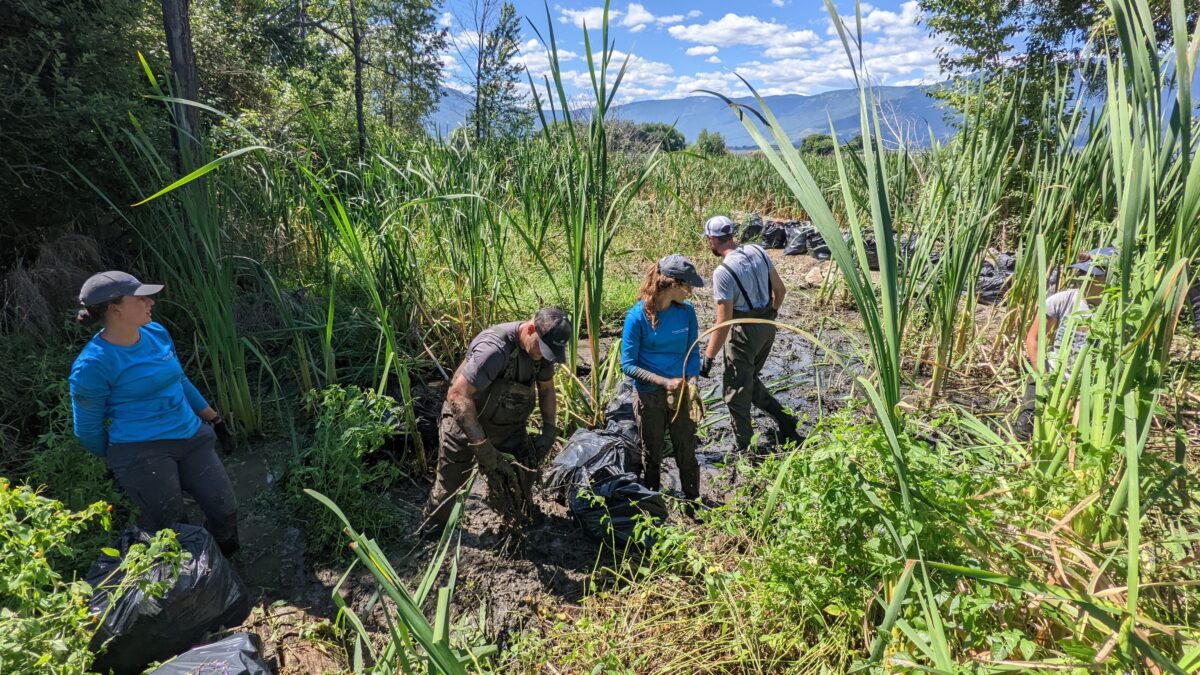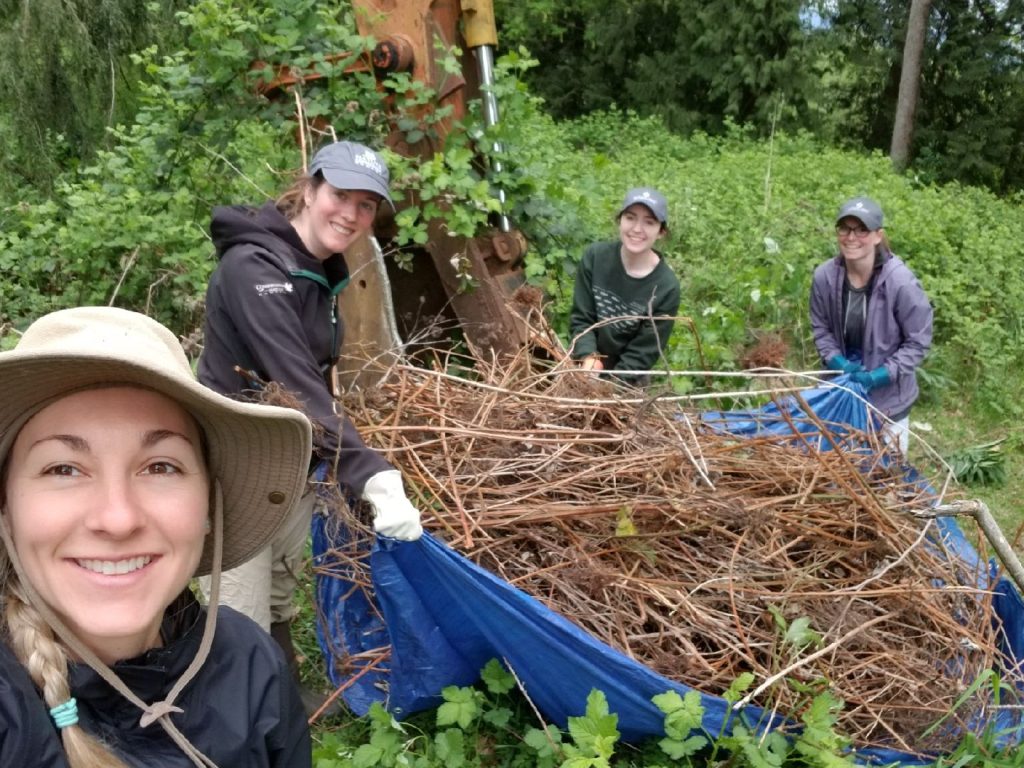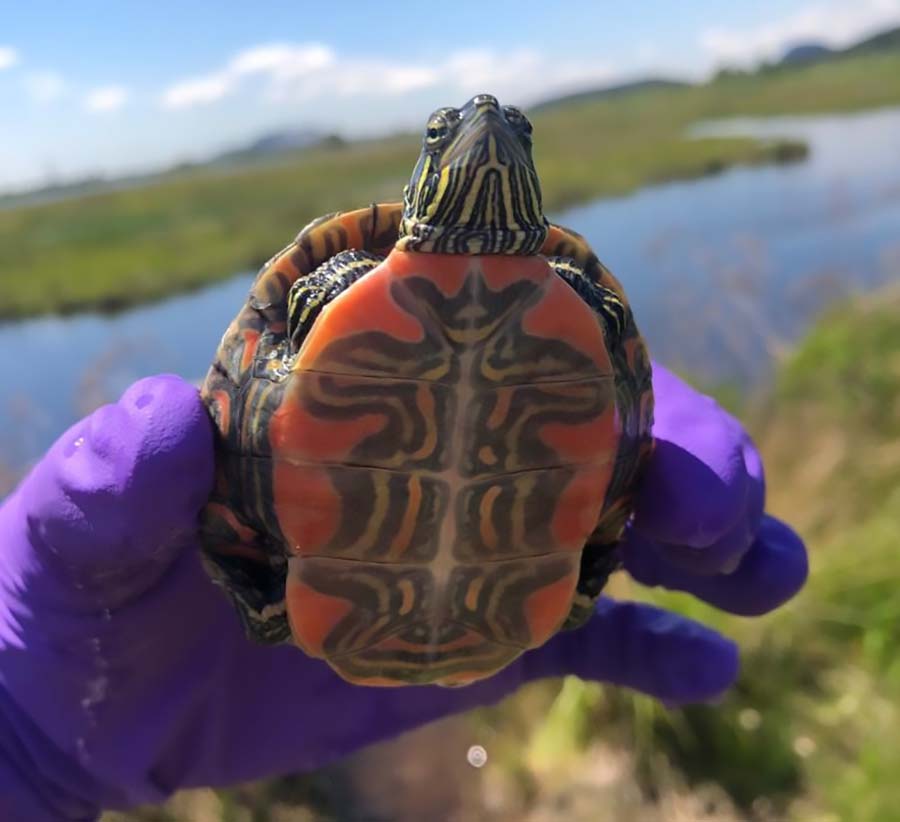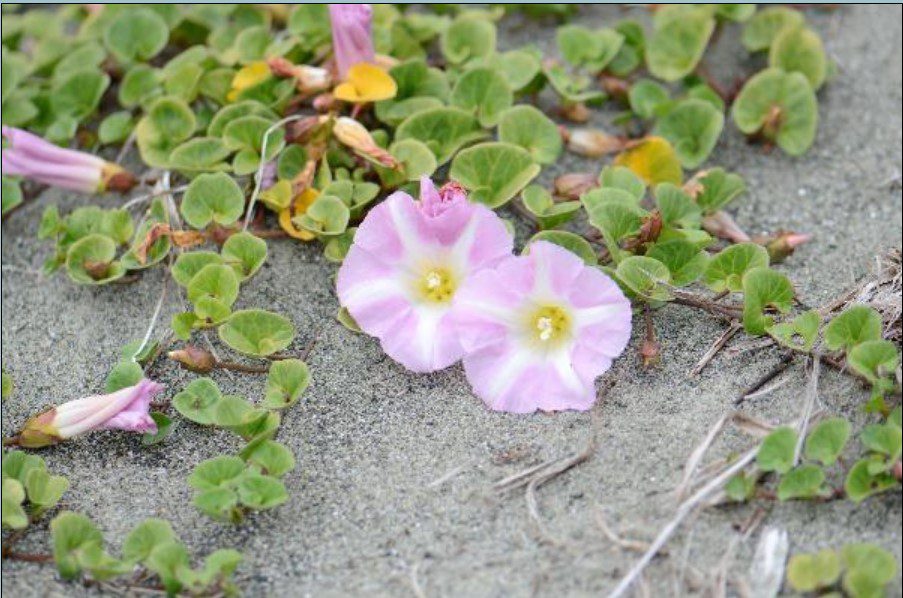
Often, invasive species can blend right into the woodwork. You might see an invasive flower while strolling through the woods and think, “wow, those colours are very beautiful!” As a child growing up in the Lower Mainland, I used to pick Himalayan blackberries and savour their delicious fruit without a care in the world. Some invasive species, such as Himalayan Blackberry, can be incredibly innocuous to humans, but bring doom for the ecosystems that they occupy.
Invasive species are non-native species introduced to an ecosystem that spread rapidly and push native species from their habitat. They spread via a host of mechanisms, including high rates of reproduction, no natural predators or competition, and favourable environmental conditions for survival. Invasive species are introduced to an ecosystem – intentionally or accidentally – and take over, sometimes to the point of ecosystem destruction.

Notably, not all introduced species are invasive. The majority of species introduced to an ecosystem fail to establish themselves and die off, while some just exist without dominating. However, when an introduced species becomes invasive, the consequences can be catastrophic.
But how can one species have such a destructive impact? There are several different ways.
Some resources are finite within an ecosystem and species must compete for their share of available space, nutrients, and water. An invasive species with the above-mentioned competitive advantages can enter the space and outcompete native species for these resources relatively unchecked. As a result, the native species are displaced and perish unless they are able to relocate. As the invader spreads, native species richness plummets the invader and other species that can adapt to the changed ecosystem.
The spread of Himalayan Blackberry in British Columbia is an excellent example of how this invasion works. These plants have very active reproduction systems (berries, continuously growing stems, deep roots) and occupy lots of above ground space, resulting in them taking over the soil and shading-out native plants. Many of us are familiar with the large, thorny masses that develop in areas where Himalayan Blackberry has been introduced.
Sometimes, invasive species have a more direct impact. They may enter an ecosystem as a predator that hunts native prey into localized extinction. The American Bullfrog eats anything that it can fit into its mouth, including other frogs, salamanders, turtles, small mammals and insects.[i] The American Bullfrog has been identified as a threat to the Red-Legged Frog and Western Painted Turtle in BC, both at-risk species.

Western Painted Turtle
Regardless of mechanism, invasive species wreak havoc on local environments. As well as severely contributing to biodiversity loss, invasives can cause soil degradation & erosion and can alter fire cycles.[ii] In turn, this can reduce the resiliency of ecosystems to environmental disturbances. Invasive species can even have impacts on the economy, reducing agricultural and fishery output, which can affect food availability for humans.[iii]
All this means that preventing the spread of invasive species is a crucial part of biodiversity conservation work. Much of The Nature Trust’s Conservation Field Crews’ time is spent removing invasive species from our conservation areas and protecting threatened species from their wrath. However, there are many things that we can do in our daily lives to prevent invasives.
Make sure to research plants before adding them to a garden. For example, British Columbians frequently plant invasive Hedge Bindweed (aka Morning Glory) for its beautiful white flowers, but the plant’s vines can easily overtake all other plants in an ecosystem and become very difficult to remove. When gardening, make sure to only plant species that are native to the ecosystem in which your garden is located. Additionally, it is essential to safely dispose of invasive weeds in municipal garbage or yard waste collection, rather than in a personal compost or on public lands where weeds can continue to spread.

Photo: Ryan Batten
Moreover, never release non-native pets into the wild. Not only is it a criminal office, these animals can quickly become invasive. For instance, some parts of BC have well-documented overabundances of feral non-native rabbits for this exact reason, causing devastation to native plant communities. Invasive species also occur outside BC, such as with the escape or release of pet snakes in the Florida Everglades, where Burmese Pythons (native to Asia) have established a breeding population of over 30,000 individuals.
Invasive species are a preventable problem that have severe impacts on biodiversity. We all need to do what we can to prevent invasive species from spreading in BC, to protect its beautiful ecosystems. Learn more about invasive species here and find out which invaders are occupying BC ecosystems here.
[i] Voller, J and McNay, R (2007). Problem Analysis: Effects of invasive species on species at risk in British Columbia. FORREX Forest Research Extension Partnership. Kamloops, BC. FORREX SERIES 20. http://www.forrex.org/publications/other/forrexseries/fs20.pdf
[ii] Brooks, M et al. (2004). Effects of invasive alien plants on fire regimes. Bioscience 54: 7, pg.677-88. Doi: https://doi.org/10.1641/0006-3568(2004)054[0677:EOIAPO]2.0.CO;2.
[iii] Paini, D et al. (2016). Global threat to agriculture from invasive species. PNAS 113:27, pg. 7575-9. Doi: https://doi.org/10.1073/pnas.160220511.
